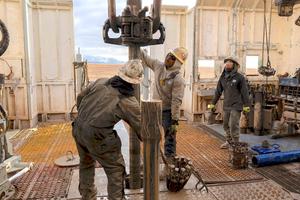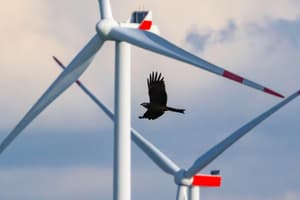By 1970, there were 118 million cars on the road in the U.S. — more than quadruple the number 20 years before.
It took no time — a decade — for America to construct itself around the car. That’s what the suburb was, a reflection in concrete and wood and brick of the logic of the automobile, designed for its dimensions, its turning radius. Lexington was an older and more compact suburb, so it was theoretically possible to negotiate it without a car — but not really. We shopped at the mall one town over, and as far as I know no one had ever approached it on foot; why would you? And the further out you went, the more car-centric the suburbs became, just a series of branching roads that eventually turned into driveways.
More than three-quarters of Americans drove to work, and most of them drove by themselves. As Meg Jacobs wrote in her history of the period, by 1970, Americans consumed a third of the world’s energy — more than the Soviet Union, Britain, West Germany and Japan combined. And mostly because of the car. By then there were 118 million cars and trucks on the American road — more than quadruple the number 20 years before. The cars were big: 20 percent bigger than they’d been just five years before. Three-quarters of them now came with air conditioning (up from 20 percent in 1960), which subtracted about two and a half miles a gallon from the fuel efficiency, not that that was a thing anyone even thought about in 1970, because gas was 36 cents a gallon.
I got my learner’s permit the day I turned 15 and a half, and of course I sat through driver’s ed, with its interminable film strips about kids who took a bewildering variety of drugs and subsequently crashed their vehicles. We practiced on a driving simulator, and then on the road with a baseball coach supplementing his pay — he directed me to merge on to the highway at 70 miles per hour four minutes into my driving career. I loved it, and not just because cars meant sex. (We literally called it ‘parking.’) Because it meant economic freedom: you could work, in order to get money to buy gas.
But my work was as a very cub reporter for the local chain of suburban weekly newspapers, and the story that I covered more than any other was: the sudden, violent collision between that car culture and world geopolitics. I was too young to really pay much attention to the first oil shock in 1973, though I was aware that there were suddenly long lines at Al’s Gulf. But by all accounts it was bad: at one Texaco station in town, the owner reported “they’ve broken my pump handles and smashed the glass on the pumps, and tried to start fights when we close.” Nixon ordered a ban on holiday lights — and even when he scaled back the order, businesses could only put up about a fifth of the ordinary spectacle. The Daytona 500 was cut to 450 miles; one White House official traded in his chauffeured limousine for a chauffeured Ford Pinto. But in March of 1974 Saudi Arabia lifted the embargo that had triggered the first oil crisis; prices stayed high, but life resumed: the momentum of suburbanization hadn’t been broken, though at least for a while cars downsized — we never had anything quite as long-nosed as that Plymouth Fury again.
I was entirely conscious, however, when the second oil shock hit, this time in 1979 after the Iranian Revolution led to sharp drop in the oil supply. The gas lines returned, and I was 18 and covering them for the local paper, making endless rounds of calls to local filling stations to see when they’d be open and for how long, so we could print the schedules on the front page. “Everyone is near 75 percent allocation, which means one out of four people is not going to get gas, and no one wants to be that one,” the owner of the Shell station told me. “I open at 7 a.m., and I’m pumped out by 11 a.m.” He was pleasant, anyway. “Hours? We have no hours,” someone answering the phone at Dom’s Amoco snapped. “I pump gas when I feel like it.” One of my responsibilities was the police log, normally a fairly dry affair but now suddenly filled with reports of people arrested for siphoning gas out of cars parked in driveways. I interviewed school officials, who were busy repairing boilers (“we are stretching a gallon of fuel oil to its limits,” the head custodian explained) and car dealers (“big cars are dead,” one VW dealer said).
“Nobody can embargo sunlight,” President Carter said. “No cartel controls the sun. Its energy will not run out.”
Along with gas station owners, I also got to interview the number three official in the country’s energy department. John Deutch was an MIT professor, and in between Washington stints he lived in Lexington, so I talked with him the week before his boss, President Jimmy Carter, was to give a nationwide address on energy conservation. Deutch — barefoot and in jeans on his back porch — was sounding appropriately sober. “If you’re a person in a situation where there is too little oil, you would look for easy solutions and for scapegoats,” he said. “But there is no quick fix. There is no question about the fact that until the American people understand that there is not as much oil as they want at prices they want, there will be problems.”
Carter had been striking the same note all along: in his first address as president he’d said “we have learned that more is not necessarily better; that even our great nation has its recognized limits.” The energy crisis, he said, was a reminder that “ours is the most wasteful nation on Earth.” As the gas lines grew longer, his sobriety deepened. “All the legislation in the world can’t fix what is wrong with America,” he said. “Too many of us now tend to worship self-indulgence and consumption,” he said, sounding different than any president had ever sounded. We should change — we should learn “that owning things and consuming things does not satisfy our longing for meaning, that piling up material goods cannot fill the emptiness of lives which have no confidence or purpose.”
Cars line up at a gas station in Darien, Connecticut during the 1979 oil crisis. Bob Riha, Jr. / Getty Images
If that sounded like an attack on suburbia, well — it kind of was. Or, if not an attack, then an invitation to think a little differently. And an invitation that might, actually, have been answered. The 1970s had begun with the publication of a book called Limits to Growth, an argument that we were reaching ecological boundaries that became one of the bestselling nonfiction volumes ever. A year later E.F. Schumacher had produced Small is Beautiful — a book so powerful that when its German-British author came to America, Carter hosted him at the White House. The sociologist Amitai Etzioni was a senior policy advisor in that White House, and he brought the president polling data to show how up in the air the nation really was; the data showed 30 percent of Americans were “pro-growth,” 31 percent were “anti-growth,” and 39 percent were “highly uncertain.” That kind of ambivalence, he told the president, was “too stressful for societies to endure,” and he was right — which explains, I think, the fateful 1980 election when we turned to Reagan and his markets-solve-all fundamentalism and thus began the path toward our current state of overheated dysfunction.
What might we have done differently in the 1970s, even before we really understood the danger that carbon dioxide was posing? It turns out that, in those oil shock years, the Carter administration fixed on one key solution: massive government support for developing solar power. “A strong solar message and program,” the president’s domestic policy advisor Stuart Eizenstat told him, “will be important in trying to counter the hopelessness which polls are showing the public feels about energy.” Carter agreed to the plan — indeed, he said a fifth of the country’s energy should come from solar power by 2000. He called for spending a billion dollars in fiscal year 1980 to create a Solar Bank to fund research and to provide homeowners with loans for putting up panels. He officially declared May 3, 1978 as Sun Day and observed this first solar holiday by traveling to a mountaintop in Golden, Colorado, home to a federal solar research facility: “The question is no longer whether solar energy works,” he told a crowd. “We know it works. The only question is how to cut costs so that solar power can be used more widely and set a cap on rising oil prices. In many places, solar heating is as economical today as power from nonrenewable sources.” He added, “Nobody can embargo sunlight. No cartel controls the sun. Its energy will not run out. It will not pollute our air or poison our waters. It is free from stench and smog. The sun’s power needs only to be collected, stored, and used.”
In 1986 the Reagan administration took the solar panels down from the White House roof and stored them in a warehouse.
And then a year later he did something even more important: on June 20, 1979, he invited dignitaries and reporters onto the roof of the White House to watch the installation of 32 solar hot-water heating panels. “A generation from now,” he said, “this solar heater can either be a curiosity, a museum piece, an example of a road not taken, or it can be a small part of one of the greatest and most exciting adventures ever undertaken by the American people.”
In truth, it took much less than a generation to deliver the verdict: literal museum piece. Shortly after taking office, Reagan cut the renewable energy research budget by 85 percent and let the tax credits for solar panels expire; he did away with assistance for weatherizing homes, and ended energy efficiency requirements for appliances. Instead, Reagan pushed hard for increased oil drilling in the U.S. and for making sure that no pesky regulations got in the way. “First, we must decide that ‘less’ is not enough,” he said. “Next, we must remove government obstacles to energy production. Putting the market system to work for these objectives is an essential first step for their achievement.”
And so in 1986 the Reagan administration took the panels down from the White House roof and stored them away in a Virginia warehouse. A top White House official thought the equipment was a “joke.” An official spokesman said “putting them back up would be very unwise, based on cost.”
As it happens, I know a little about those panels. They were rescued from that Virginia warehouse by a faculty member at Unity College, a small school in a rural corner of Maine, where for years they sat on the roof of the cafeteria, heating the water used in the kitchen. They gave away or sold a few of them: I learned about them in 2008 when I visited the Sun Moon Mansion, the headquarters of China’s largest solar hot water company. Huang Ming, who’d founded the company, kept one of Carter’s panels in a place of honor in a small museum of renewable energy just off his executive offices. The panels, he said, had helped inspire him to create a business that was currently heating the water for a quarter billion of his countrymen — some Chinese cities, viewed from the air, look as if every single building has a solar hot water heater on top.
President Jimmy Carter in front of solar panels on the roof of the White House, June 20, 1979. Universal History Archive / Universal Images Group via Getty Images
Anyway, Unity officials agreed to hand me a couple more of the historic panels, and so in 2010 I rented a van, hitched a trailer behind it, and began dragging them south toward the White House. It was a fun road trip — three students and a professor from Unity were along. We hosted rallies in Boston, New York, and Baltimore — we’d pour a gallon of water in the top of the heater, point it at the sun, and eight or nine minutes later steam would be churning out: 31 years later these things worked as well as the day they went up. Our hope, of course, was that Barack Obama (whom we all had worked to elect) might symbolically reinstall one, up top of his new house. We thought it made sense: when the first lady had planted the White House garden a year before, seed sales had gone up 30 percent. We thought that the gift might help the administration restart solar history after three decades.
But no. Arriving in Washington, we were directed by administration officials to a side door at the Executive Office Building — the five of us were ushered by an intern in a blue blazer into the wood-paneled room where, once, the UN Charter had been drafted. This day, a trio of what The New York Times called “midlevel White House” officials met with us, in the single most frustrating example of bureaucratic obstruction I’ve ever gotten to witness close up. First they filibustered — long boilerplate explanations of how the administration was “building a bigger, better, smarter electric grid, all while creating new sustainable jobs.” I sat back and let the three students respond, and they were magnificent. “Thank you for your good work,” they said politely, over and over. “But no one really knows about it — certainly not our friends, who voted for Obama but are increasingly disillusioned. What better way to spread the word about what you’re up to than the high-profile move of putting solar panels back on the roof?”
No, said the officials, but they refused to say why. Literally refused. The students asked, again and again, and the woman who was leading the conversation kept repeating the same phrase: “If reporters call and ask us, we will provide our rationale.” But they wouldn’t provide it to us, and they wouldn’t pose for a picture with the students, and they wouldn’t accept the old panel even to put in storage.
Jean Altomare and Jesse Pyles of Unity College demonstrate one the original water-heating solar panels installed on the Carter White House. 350.org via Flickr
Eventually we were back on the sidewalk, and the three college students were talking to reporters. They were in tears — of disappointment, but also I think of genuine perplexity. Amanda Nelson: “I didn’t expect I’d get to shake President Obama’s hand, but it was really shocking to me to find out that they really didn’t seem to care.” Elliott Altomare: “We went in without any doubt about the importance of this. They handed us a pamphlet.” Measured the way activists measure things, it was entirely worth it: three stories in the Times, plenty of other coverage. We’d moved the needle a little further along. But I felt a little guilty about disillusioning these students: they’d seen early on some of the cowardice and moral compromise inherent in holding power. And — for all my advanced years — I felt a little disillusioned too. It certainly made it easier to come back to the White House the next year and help organize the protests against the Keystone XL pipeline that led to the mass arrests of demonstrators. In time we won that battle: we forced Obama to block KXL, the first loss of that kind Big Oil had ever suffered. And in time — safely into his second term — Obama did indeed put solar panels up on the White House roof. “The project, which helps demonstrate that historic buildings can incorporate solar energy and energy efficiency upgrades, is estimated to pay for itself in energy savings over the next eight years,” a spokesman said.
In retrospect, it was pretty clear why Obama wanted nothing to do with those solar panels: they were tainted by their association with Carter. The 1980 election, 30 years later, still dominated our politics. We’d made a choice then, and that choice still held sway, even in the administration of our first Black president, a man who on the eve of his nomination had said that future generations would look back on that time as “the the moment when the rise of the oceans began to slow and our planet began to heal.” But he calculated that we hadn’t yet reached the moment when we could move past that earlier moment in our political history. Here’s how Obama put it recently: “Through how I thought about these issues when I first came into office, I think there was a residual willingness to accept the political constraints that we’d inherited from the post-Reagan era,” he said. “Probably there was an embrace of market solutions to a whole host of problems that wasn’t entirely justified.” Probably.
This article is adapted from Bill McKibben’s new book, The Flag, the Cross, and the Station Wagon.







